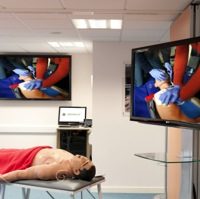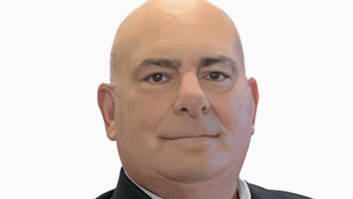We offer a thorough examination of what is perhaps one of the fastest-growing AV markets.
According to a United Nations report, the number of people aged 60 and over will more than double between now and 2050 – from 841 million in 2013 to over two billion in 35 years’ time. It expects that, by 2047, there will be a greater number of older people than children for the first time. In healthcare terms, that is the proverbial ticking time-bomb; it’s estimated that caring for the elderly is four times as expensive as it is for those who are younger, and that the elderly consume between 40% and 50% of healthcare resources. We are all living longer – thanks, paradoxically, to improved healthcare.
At the same time, there is not a government in the world that is not challenged by the escalating cost of healthcare. The amount the US spends on healthcare – over $3 trillion – would, if it were a country, make it the world’s fifth biggest economy. In the UK, the National Health Service’s annual budget is just under £100 billion.
Those are the numbers that are at the heart of, and driving the growth in, telemedicine around the world. The problem is exacerbated by the fact that the growth in the number of doctors has not kept pace with the growth in the numbers of those needing them.
The final piece of the puzzle
“The idea of remote care has been around for years and, slowly and surely, technology has been drawn into the delivery of care,” says Ewan Marshall, co-founder and CEO of SpeakSet, whose product is designed to be “the most accessible video calling system in the world” and which is claimed to save £2,500 per patient per year. “As 90% of healthcare is delivered in a face-to-face interaction between patient and care worker, video consultations are the final piece of the care puzzle. Even in just the last few years, we have seen an explosive growth in the use of telemedicine and I only expect this to increase. The time for telemedicine is now.”
According to Marshall, as little as a 1% saving in time spent face-to-face represents a saving to the UK’s NHS of £200 million.
“Telemedicine has been widely used in the UK for a number of years,” agrees Andrew Graley, director of healthcare, government and education, EMEA at Polycom, “especially in more remote areas where distance and availability is challenging. With the improvement in networks – in terms of both availability and speed – and a decrease in price, this technology can be implemented more cost-effectively than ever before in an increasing number of locations to bring about a higher standard of patient care.”
“We’re seeing an increasing demand for a smaller number of practitioners to provide care to a larger number of patients, without an increase in the budget,” says Richard Middleton, country manager for the UK and Ireland at Lifesize. “Another major factor behind growth is how accessible equipment to support telemedicine has become. It can be accessed using everyday technology such as on tablets, mobiles and laptops. Additionally, with the increase in video quality over the past four to five years, it is now possible for practitioners to review PACS [picture archiving and communication system] images over a telemedicine link, enabling teams to review patients fully from remote locations.”
“We need to use technology to provide access to healthcare and improve outcomes while eliminating unnecessary costs – although in the US, there are unique obstacles that need to be overcome,” believes Roger Downey, communications manager at US-based GlobalMed, whose company provides integrated solutions that include telemedicine stations, connected medical devices and software.
‘Telemedicine’, it seems, covers a diverse range of applications and disciplines – and, confusingly, as Michael Roach, UK business manager for healthcare at Involve Visual Collaboration points out, is also known as telehealth, teleassessment, teleconsultation and telemonitoring – each a subtly different implementation of the principle. According to Roach, his companies – Involve and Immedicare, a unique joint venture with Airedale NHS Foundation trust – have helped reduce A&E attendance and admission rates from care homes by as much as 45% and 37% respectively, using their virtually enabled clinical assessment service.
Highly segmented
Roach also talks about telemedicine systems specifically adapted for applications such as stroke, burns, paediatrics and GP-based services that his company provides – and Mark Noble, vice president, strategic marketing at video collaboration company Vidyo, sees a similar picture.
“The telemedicine market is a highly segmented market, almost on a specialty by specialty basis,” he says. “Some segments, like telestroke, telebehavioural health and even teleICU to some extent, are mature and widely adopted across major health systems. Other segments, like ambulatory video visits, are not as mature but have tremendous momentum and a great deal of focus.”
Downey also notes the opportunity for confusion. “You need to make the distinction between telemedicine and telehealth as we use the terms in the US,” he says. “Telemedicine here involves the real-time interactive consults between a patient in one location and a physician in another via secure videoconferencing.
“Telehealth,” he goes on, “has two meanings. It has been frequently used as an umbrella term for a wide range of connected health which would include telemedicine, as well as remote patient monitoring and teleICU. But more recently, it has come to mean direct-to-consumer medicine – a telephone conversation with a physician for a fee, providing services for minor, common ailments that can be diagnosed without an examination.”
SpeakSet video consultations
Polycom videoconferencing
Lifesize videoconferencing solutions
GlobalMed telemedicine solutions
Involve Visual Collaboration
Vidyo video collaboration







